Flinders Street Station design by HASSELL + Herzog & de Meuron #architecture

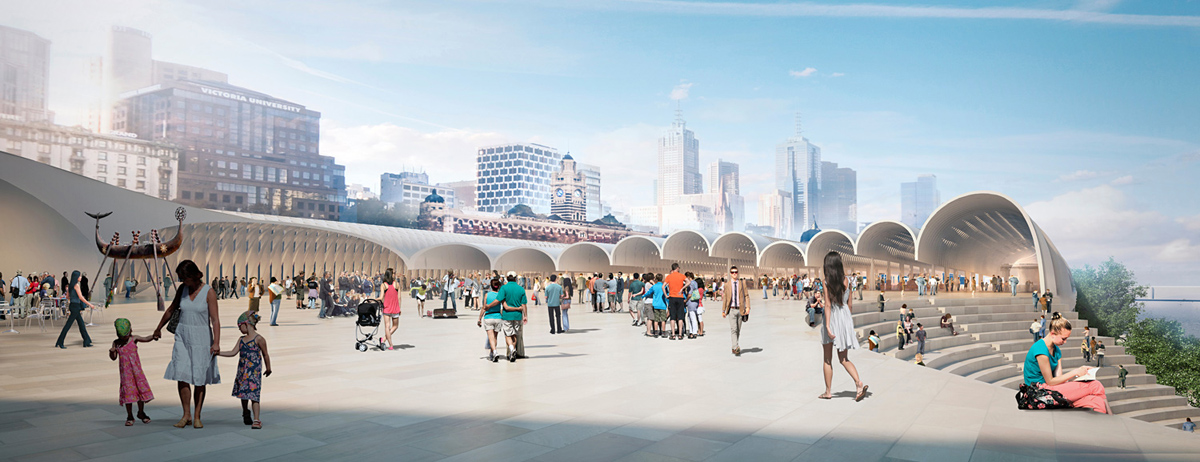

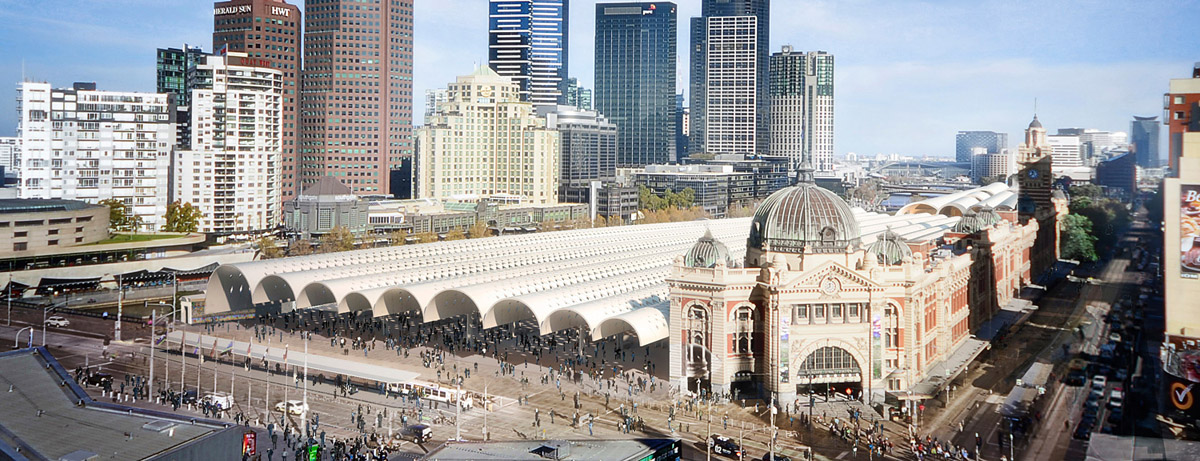

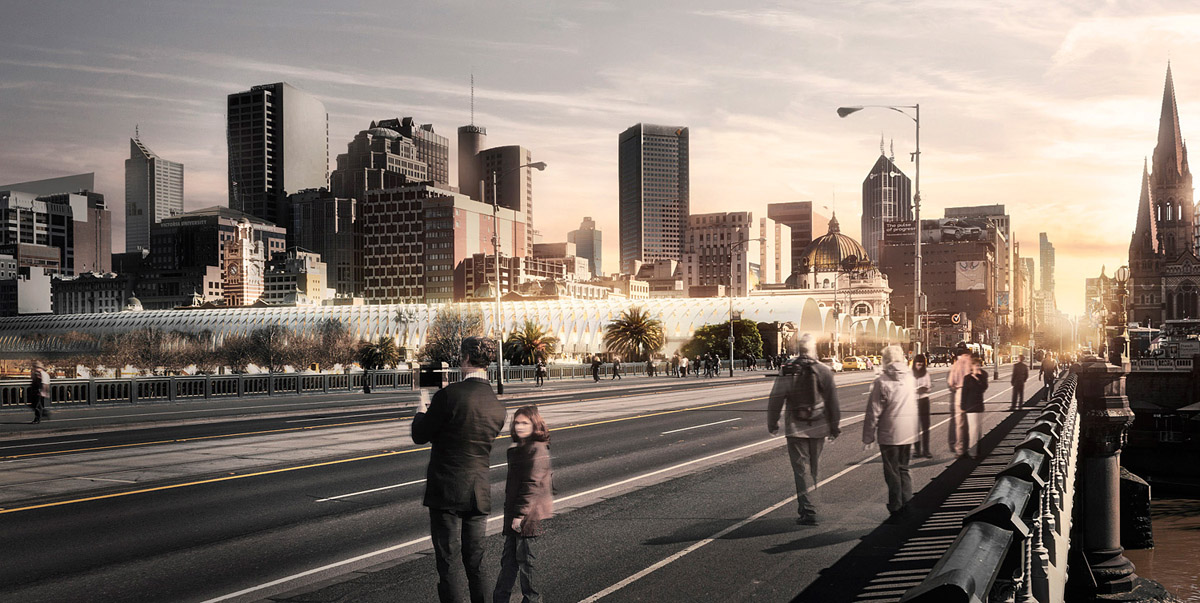
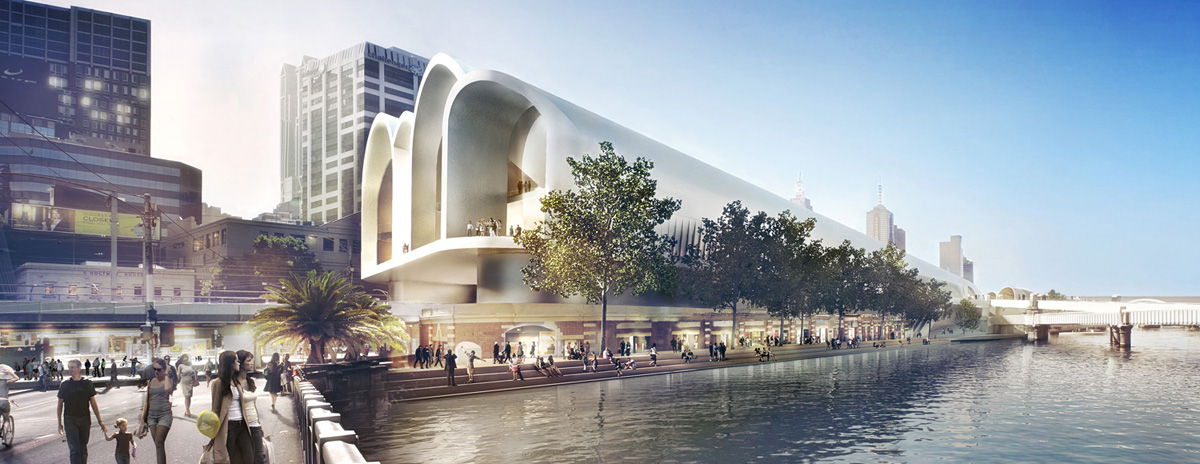


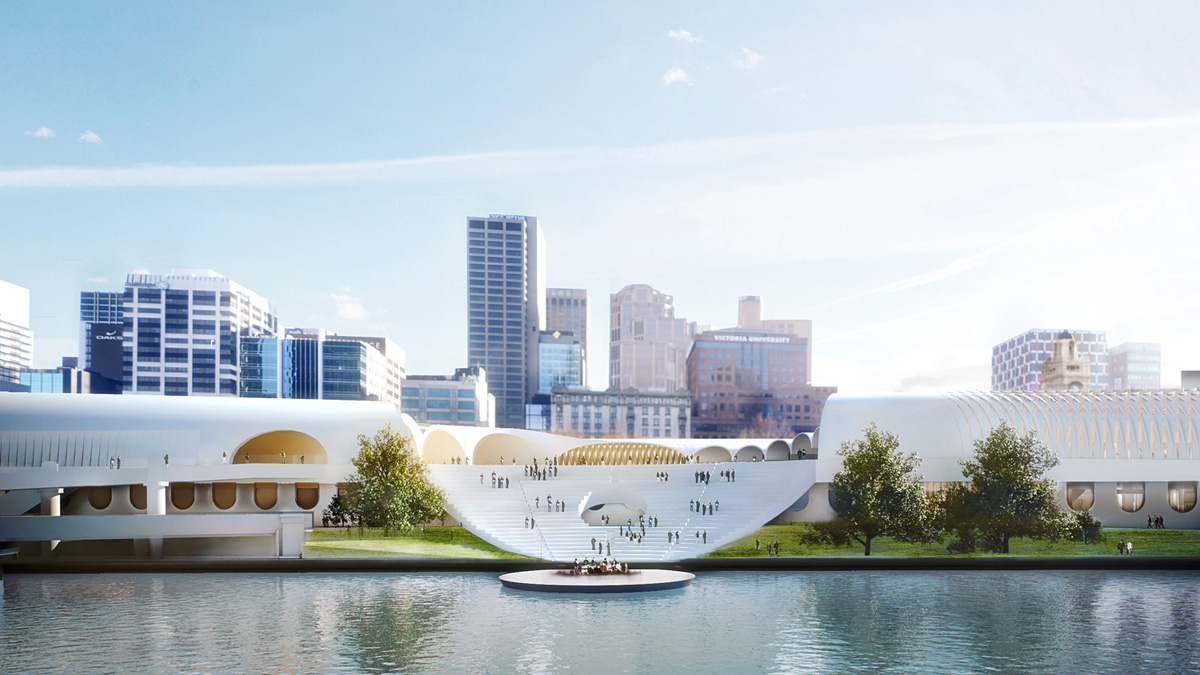
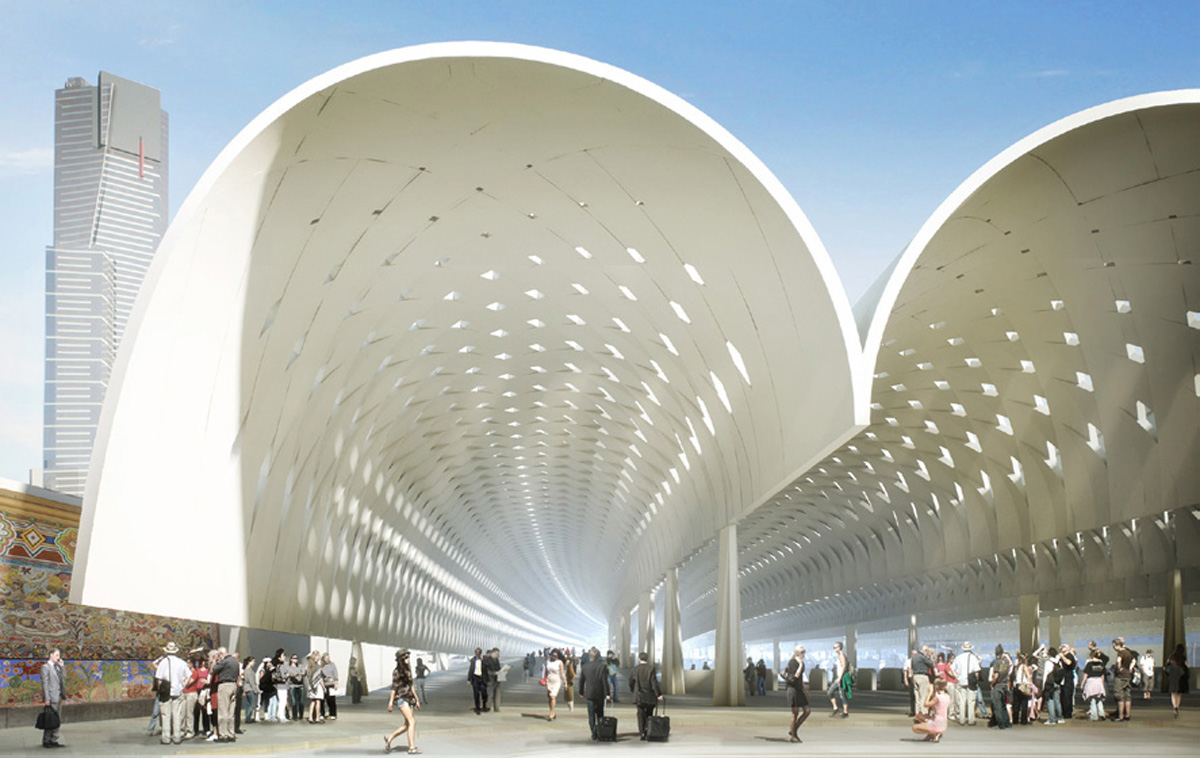

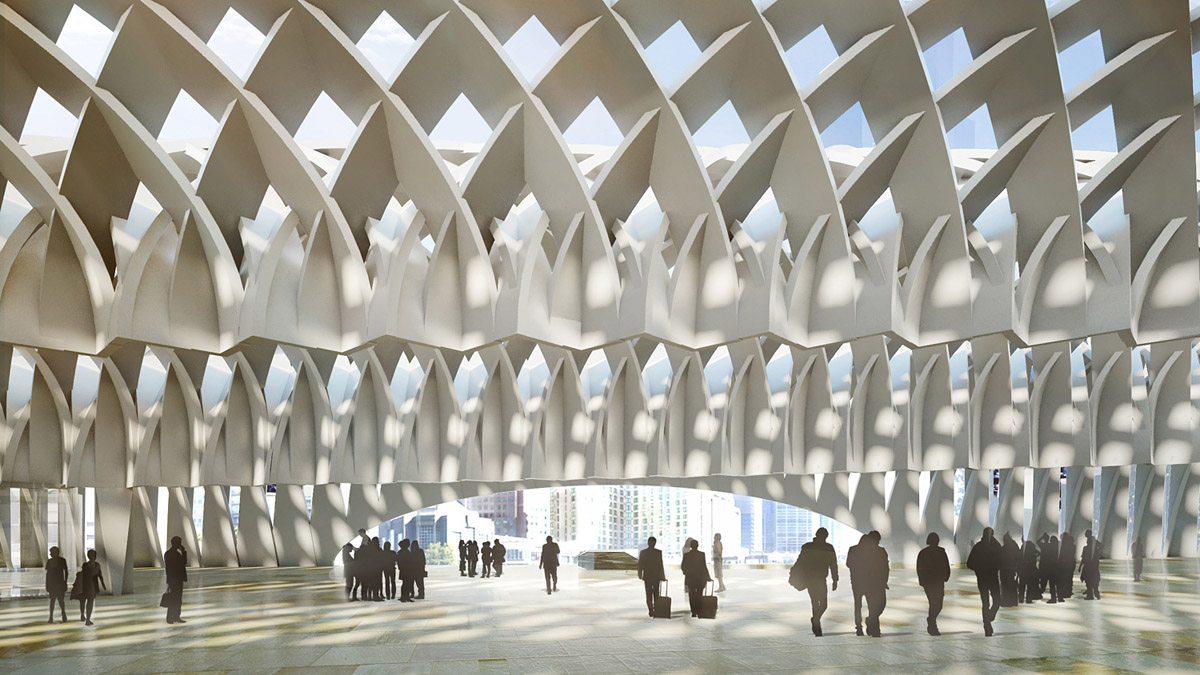



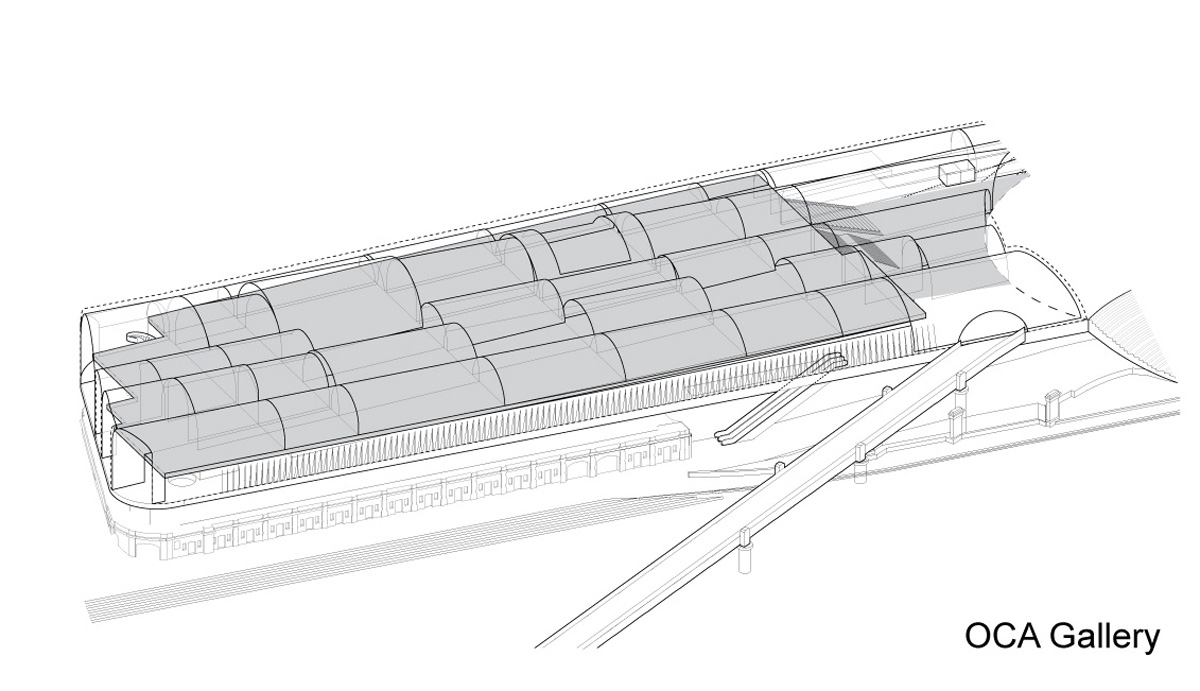
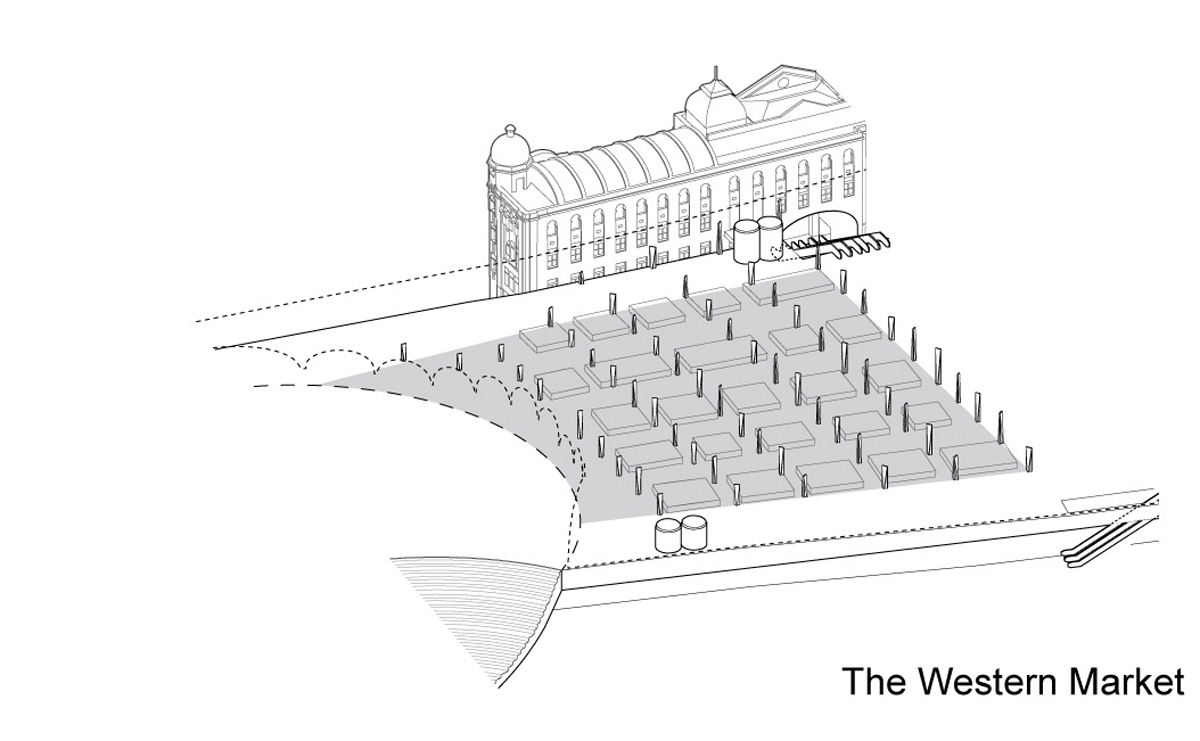
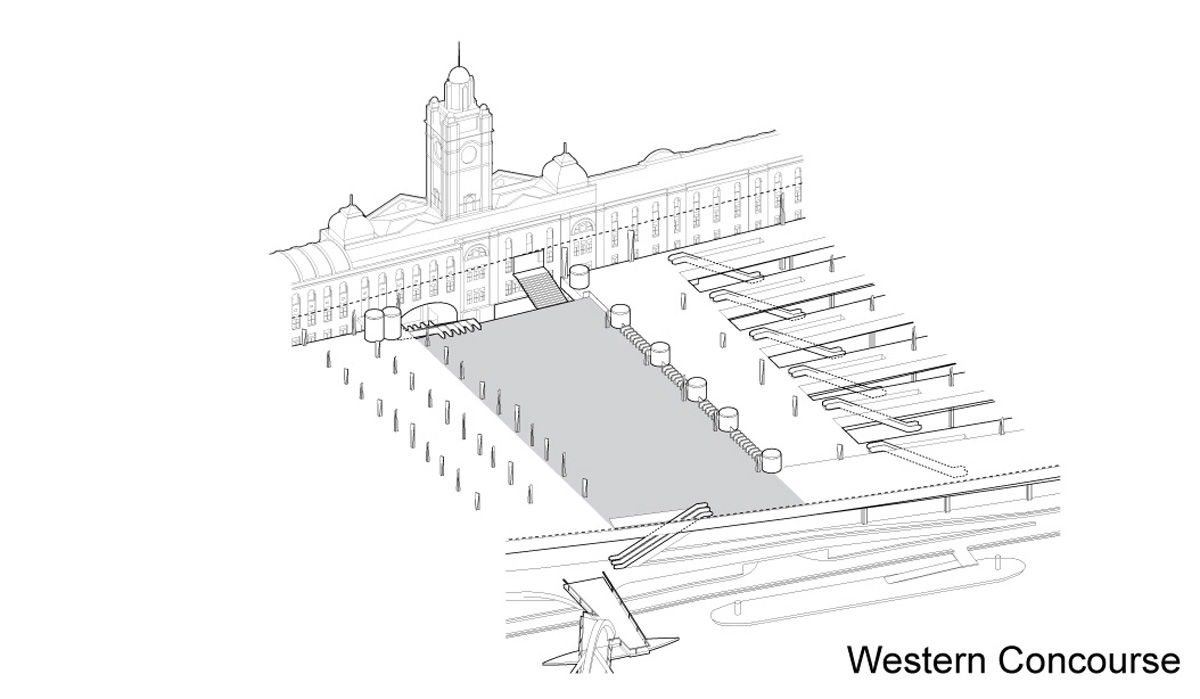

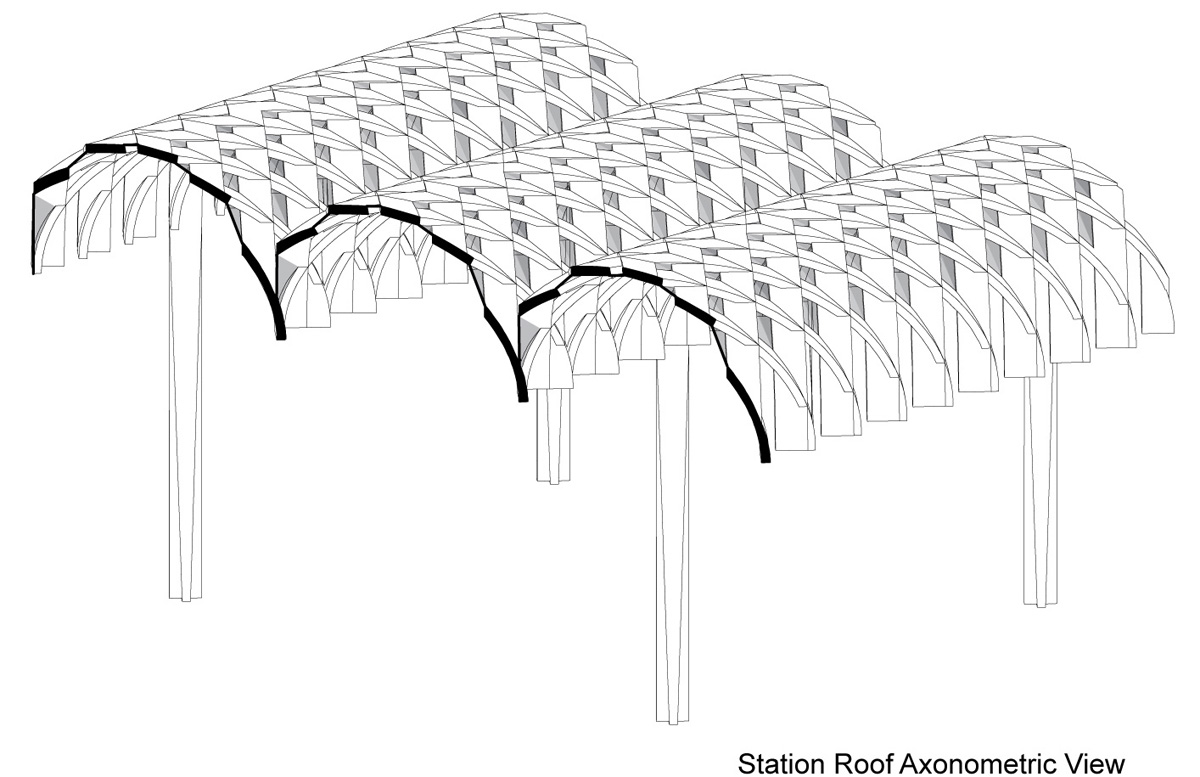
Architects: HASSELL + Herzog & de Meuron
Location: Flinders Street, Melbourne, Australia
Client: Major Projects Victoria
Expertise: Culture and the Arts; Transport and Infrastructure; Urban Strategies
Scale: 140,000 sqm
Status: Open Competition – Wine
Year: 2013
Flinders Street Station is both an iconic heritage building in the Australian city of Melbourne and the hub of its metropolitan rail network. Over 150,000 people a day pass through the station and this is expected to more than double in the next decade.
Built to a 19th century design, the station has been compromised by a series of alterations over the years. The Government of the State of Victoria is sponsoring a A$1 million international competition for the redesign of the station for the next 100 years.
HASSELL formed a global team with the renowned Swiss based firm Herzog and de Meuron, along with Purcell heritage consultants from the UK. The design proposed by HASSELL + Herzog and de Meuron was unanimously selected as the winner by the design competition jury. There were 117 entries from around the world.
Flinders Street Station sits on 4.68 hectares on the edge of the central business district. The site is adjacent to Melbourne’s Federation Square and has played an important role in the history of the region, both before and after European settlement. All these factors make the redevelopment of the station a once in a century opportunity for urban renewal and revitalisation, creating a destination for both the people of Melbourne and visitors to the city.
The HASSELL + Herzog and de Meuron proposal:
_Retains the best known heritage buildings, opening up once bustling features such as an historic ballroom for new public use
_Turns the station into a modern transport hub, greatly improving the passenger experience with easier access from all directions and links to other transport modes, and
_Transforms the site into a new civic precinct with a major public art gallery, a public plaza, an amphitheatre, marketplace and a permanent home for arts and cultural festival organisations.
The heritage buildings currently separate the city from the railway lines and from the river as the linear form and layout was determined by the original layout of the tracks. Our proposal respects this linear heritage but re-connects the precinct and site to re-engage the city and river.
An important part of the original design for the station was a collection of arched roofs, adjacent to the heritage buildings, with large vaults covering the platforms. This roof was never built, so the station’s intended glory was not fully realised.
Our proposal respects the original design intent and traces the arches and vaults in shape and scale from the existing heritage building, defining the architectural expression of the new roof. Rather than creating one monumental gesture, a series of vaults of varied height and scale follows the track lines, precisely defining the space above each train and the passengers on each platform. The result is an articulated roofscape made up of individual smaller vaults. The roof is built from woven structural bands that reinvent the historic vaulted roofs of classic train stations. It protects waiting passengers from the weather and disperses dappled natural light and facilitates ventilation.
Our proposed gallery for Oceanic and Contemporary Art (OCA) sits above the historic Banana Alley Vaults at the western end of the station. This acknowledges the importance of this point on the river, which used to be known as the Falls, to indigenous communities before European settlement. The Falls were waterfalls that separated the freshwater of the river from the salt water of the sea. These waterfalls have long since been removed. The OCA gallery also forms a strong juxtaposition and relationship with Customs House and the Immigration Museum. It strengthens Melbourne’s ‘Arts Triangle precinct’, augmenting the heavily pedestrianised zone that links both sides of the river.
The vaults that form the gallery roof are an extension of the vaults over the platforms. As a result, the station at one end of the site and the gallery at the other have distinct and characteristic identities, yet share a unifying vaulted expression.
The regular pattern of intersecting vaulted spaces that form the gallery result in calm and well-proportioned exhibition spaces and courtyards along with education facilities, event spaces, workshops, a library, small theatre, and lecture hall.
These spaces are located adjacent to and are directly accessible from the large circular plaza that is cut into the centre of the roofscape.
On the other side of the plaza, the extended vaulted roof of the station concourse creates a large covered market area. The circular shaped plaza becomes the hinge of the entire building and precinct. It provides a new, contained civic environment for festivals, weekly speciality markets, or other public activities.
On the south side, it opens up to the Yarra River with an amphitheatre with steps for seating descending to the water’s edge. A floating stage in the river means the amphitheatre can be used for performances of any kind, activating the north bank of the river.
The existing heritage building along Flinders Street will continue to house the railway administration function. It will also become offices and venues for the organisations that run Melbourne’s diverse arts and cultural festival calendar.
The new Flinders Street Station will be a fundamentally public place: a civic destination with a distinct architectural identity, a home for many different activities, and an urban linchpin in the heart of Melbourne. – HASSELL
Since 2009. Copyright © 2023 Milimetdesign. All rights reserved. Contact: milimetdesign@milimet.com
































